The Complete Guide To Guitar Intonation For Electric, Acoustic, Bass and Classical Guitars
What is Guitar Intonation?
Guitar intonation is the adjustment of the saddle that makes the fretted notes play in tune with the open string. The accuracy of the fretted note is governed by the distance of the saddle from the frets. Intonation is adjusted by moving the saddles forward or backward.
Why Is It Important To Have Good Guitar Intonation?
Intonation is a very important concept to understand because you want your guitar to play well in tune up and down the fretboard. Not having good intonation can cause individual notes on a guitar to sound too sharp or too flat. Intonation can take a little bit of time to get it just right, but it is worth it in the end.
When Should I Check My Guitar’s Intonation?
If you notice that the fretted note is flat compared to the open string, then the saddle is positioned too far back. If the fretted note is too sharp, then the saddle is too far forward.
Note For Acoustic Guitars: The saddles on an acoustic guitar generally cannot be moved. In some extreme cases, the saddle is completely in the wrong place and will not intonate. The solution is to fill the saddle slot, which is a job for a qualified luthier or guitar technician.
What Tools Do I Need For Guitar Intonation?
- A quality tuner. MusicNomad recommends a strobe tuner.
- A Phillips screwdriver or Allen wrench (depending on the type of guitar), to turn the saddle adjustment screw either forward or backward. MusicNomad’s 26 pc. Screwdriver and Wrench Set is specifically designed for guitars and is perfect for making adjustments on all your guitar hardware. MusicNomad’s Octopus 17 ‘n 1 Tech Tool another lower cost option.
- In some cases, you will want to have a nut slot lubricant on hand, such as MusicNomad’s TUNE-IT to reduce any tuning issues while you are intonating.
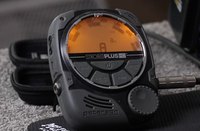
-
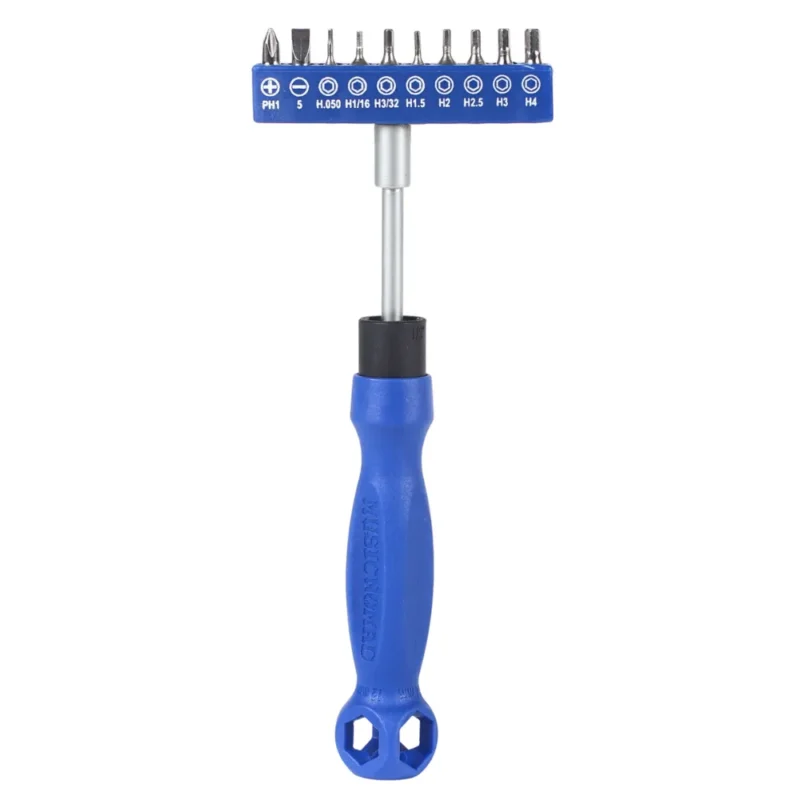
The Octopus 17 ‘n 1 Tech Tool
MN228$22.99 -
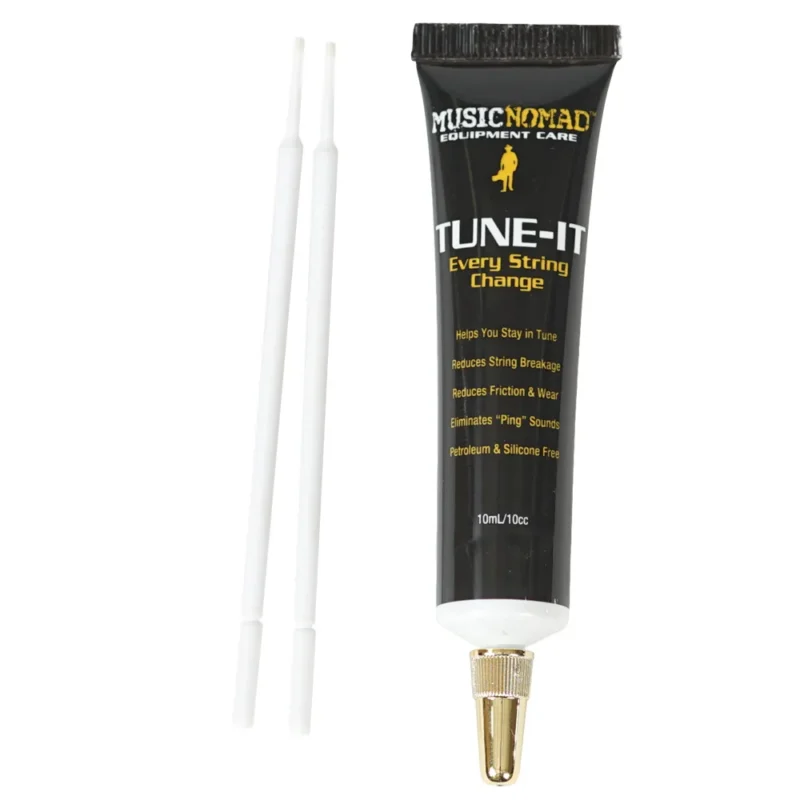
TUNE-IT – String Instrument Lubricant
MN106$9.99 -

Premium Guitar Tech Screwdriver and Wrench Set
MN229$49.99
How Do You Set Intonation On A Guitar Such As Fender or Gibson Les Paul?
Guitar intonation is the adjustment of the saddle that makes the fretted notes play in tune with the open string. The accuracy of the fretted note is governed by the distance of the saddle from the frets. Intonation is adjusted by moving the saddles forward or backward.
Fender
Gibson
- Perfectly tune the open string you will intonate
- With your finger, press the string down at the 12th fret and play the note. If the note is perfectly in tune, no adjustment is needed and go to the next string. Make sure to perfectly tune the string you will intonate.
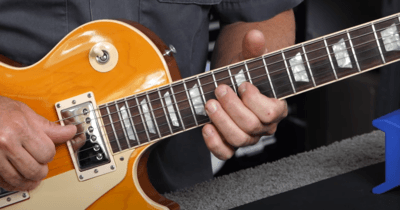
- Individually adjustable saddles have adjustment screws that come in from the back of the instrument. To pull the saddle back, tighten the screw. This will lengthen the scale and flatten the fretted notes. Depending on how much down tension there is on the saddle, you can loosen the strings to make it easier to pull the saddle back. To move the saddle forward (towards the neck), you will loosen the screw. This will shorten the scale and sharpen the fretted notes.
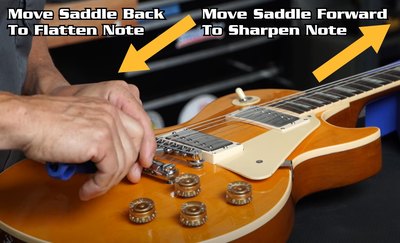
- After you move the saddle, repeat step one. Be sure to retune your open string.
- If you play high on the neck, be sure to check your intonation at the 17th fret as well. You may find it is out of tune even though the 12th fret is perfect. Try to get them both as close as you can, splitting the difference if necessary. On an instrument with two strings per saddle, such as a TELECASTER ®, do your best to split the difference.
How Do You Set Intonation On A Floyd Rose/Tremolo Bridge Locking Nut?
- After you have ensured your guitar is in tune, you will press the string down at the 12th fret and play the note. To adjust intonation on a locking tremolo guitar, you will loosen the string until it is flopping, then using the correct size Allen wrench, loosen the screw to move the saddle either forward or backward.
- If the screw is in the middle position, the saddle can almost make it seem hidden. Therefore, make sure to move the screw to the forward position so that you can have more saddle travel.
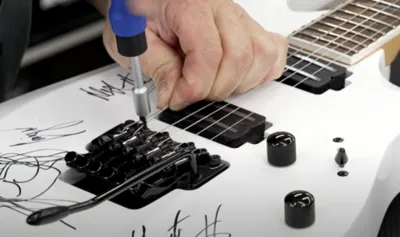
- Hold the saddle while loosening the screw. Move it forward into the next hole, then tighten it back down.
- Let it slide forward just ever so slightly before tightening the screw back down, and then tune it back to pitch.
Note: Locking tremolo saddles do not have an adjustment screw on the end to make fine adjustments like you would on a Fender Stratocaster or Telecaster saddle. You loosen the set screw, and you are sliding the saddle backward and forward until you get the right intonation point.
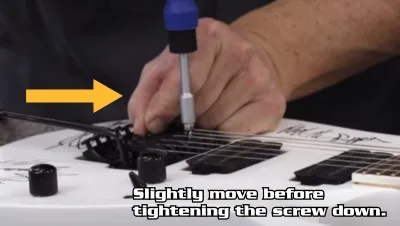
Do You Check Your Intonation Only At The 12th Fret?
Typically, most players will not play beyond the 12th fret. You can check the 17th fret as well to make sure that you are in tune all the way up the neck. That said, even if you intonate perfectly at the 12th fret, you might find that the intonation up the neck could be slightly sharper or slightly flatter. Checking everywhere might lead you to split the difference depending on your play style. It’s a good idea to play octaves across the neck to and listen for any notes that might sound too sharp or too flat.
Do I Need To Change My Strings Before I Intonate My Guitar?
You do not need to change your strings before you intonate your guitar. We recommend changing your strings if they are old or worn out. Otherwise, there is no need to change strings before intonating your guitar.
My Screw Can’t Turn Any Further To Intonate My Guitar. What Should I Do?
If you find that you cannot turn the screw any further to intonate, you might need to loosen the screw and slightly slide the saddle either backward or forward before trying to tighten the screw again. Try also loosening the string you are trying to intonate to relieve some tension.
Do I Need To Turn My Screw Clockwise Or Counterclockwise To Set Guitar Intonation?
For most string instruments, if you need to move the saddle backward (flatten the note), you will need to turn the saddle adjustment screw clockwise. Moving the saddle forward (sharpening the note) would require turning the screw counterclockwise. Make sure to loosen the string slightly to loosen the tension before you begin turning the screw.
My Saddle Won’t Move When I Turn The Screw To Adjust Intonation. What Should I Do?
Sometimes as you are loosening the screw to move the saddle, the spring spring might not be powerful enough to push the saddle forward. A solution is to loosen the string or push the saddle slightly with your fingers.
No Matter What I Do, I Can’t Get Every Note Perfectly Intonated. What Should I Do?
On some guitars, you might have a situation with the fret placement where you can’t get every note perfectly intonated. For example, Gibson guitars tend to run sharp in the upper frets. Different guitars have different idiosyncrasies. If you have a guitar that is not coming into line on both the 12th fret and the 17th fret, you can optimize for different parts of the fretboard to split the difference.
My Tuner Picked Up Some Drift. Should I Be Concerned?
Any time you use a high-accuracy strobe tuner, a slight difference will not be audible. You will not need to worry about it unless you hear a clear discrepancy in the note.
My Bridge Is Flipped. What Should I Do?
If the bridge is flipped, you would turn the screw in the opposite direction. For example, if you want the saddle to go backward if the fretted note is sharp, you would tighten the screw and move the saddle back just a bit before testing the string again once you have your guitar back in the playing position.
What Is Strat-itis, And How Do I Fix It?
As you check your intonation on the upper frets, you may notice a somewhat common condition in Stratocaster guitars known as Strat-itis. This is when the pickups are too close to the strings, and they are creating a magnetic pull on the string that is causing the note to have a warbly sound. Strat-itis heavily affects intonation. If this happens, lower the pickups until the string is outside the magnetic force so they do not pull on the strings. This will allow the string to ring clearly. Afterward, re-adjust the pickups.
